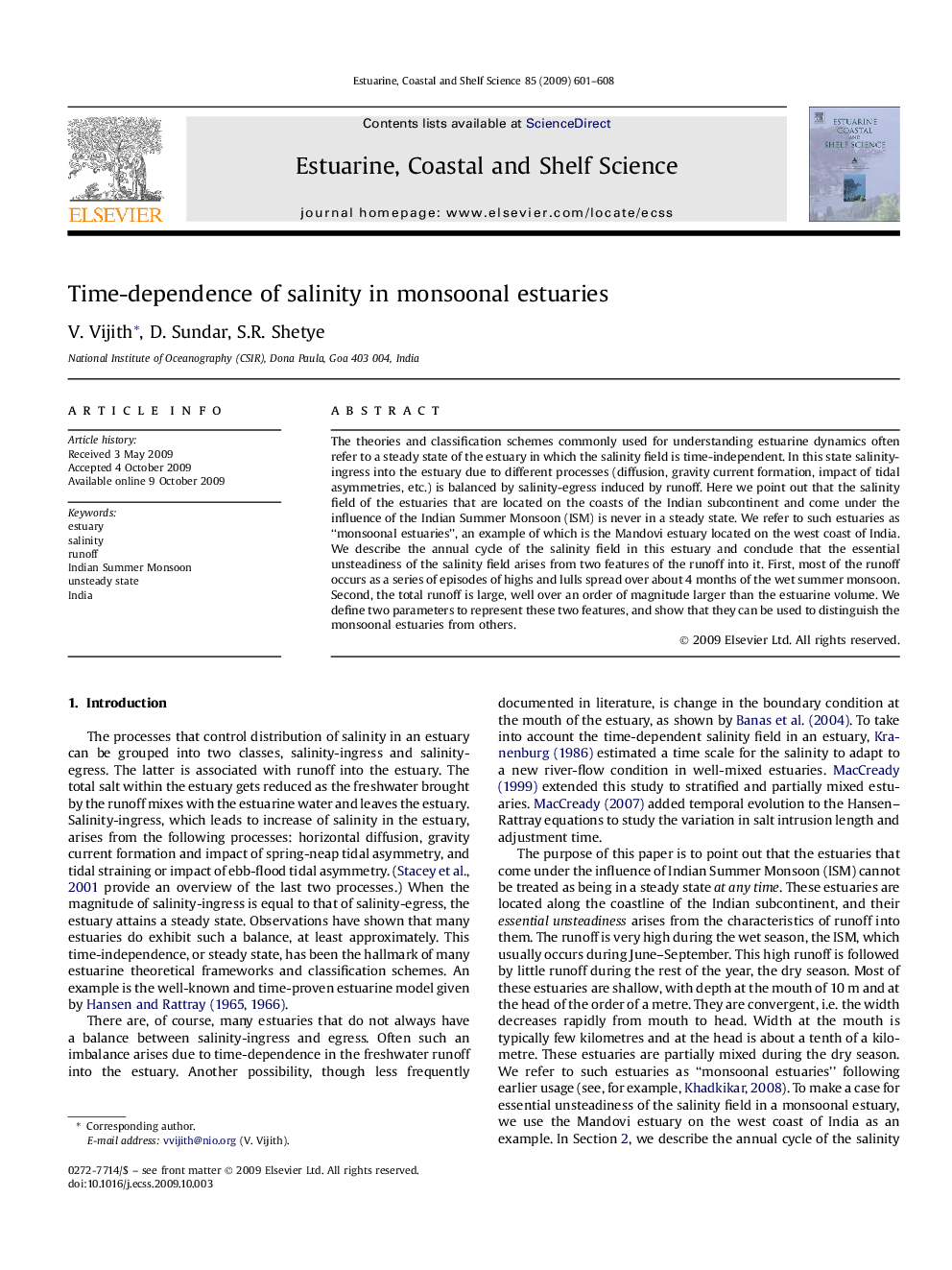| Article ID | Journal | Published Year | Pages | File Type |
|---|---|---|---|---|
| 4541281 | Estuarine, Coastal and Shelf Science | 2009 | 8 Pages |
The theories and classification schemes commonly used for understanding estuarine dynamics often refer to a steady state of the estuary in which the salinity field is time-independent. In this state salinity-ingress into the estuary due to different processes (diffusion, gravity current formation, impact of tidal asymmetries, etc.) is balanced by salinity-egress induced by runoff. Here we point out that the salinity field of the estuaries that are located on the coasts of the Indian subcontinent and come under the influence of the Indian Summer Monsoon (ISM) is never in a steady state. We refer to such estuaries as “monsoonal estuaries”, an example of which is the Mandovi estuary located on the west coast of India. We describe the annual cycle of the salinity field in this estuary and conclude that the essential unsteadiness of the salinity field arises from two features of the runoff into it. First, most of the runoff occurs as a series of episodes of highs and lulls spread over about 4 months of the wet summer monsoon. Second, the total runoff is large, well over an order of magnitude larger than the estuarine volume. We define two parameters to represent these two features, and show that they can be used to distinguish the monsoonal estuaries from others.
